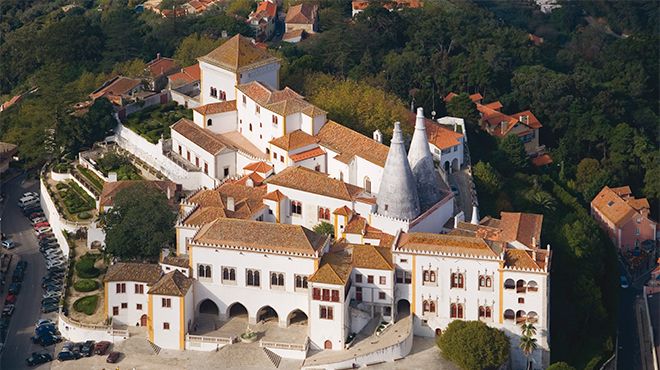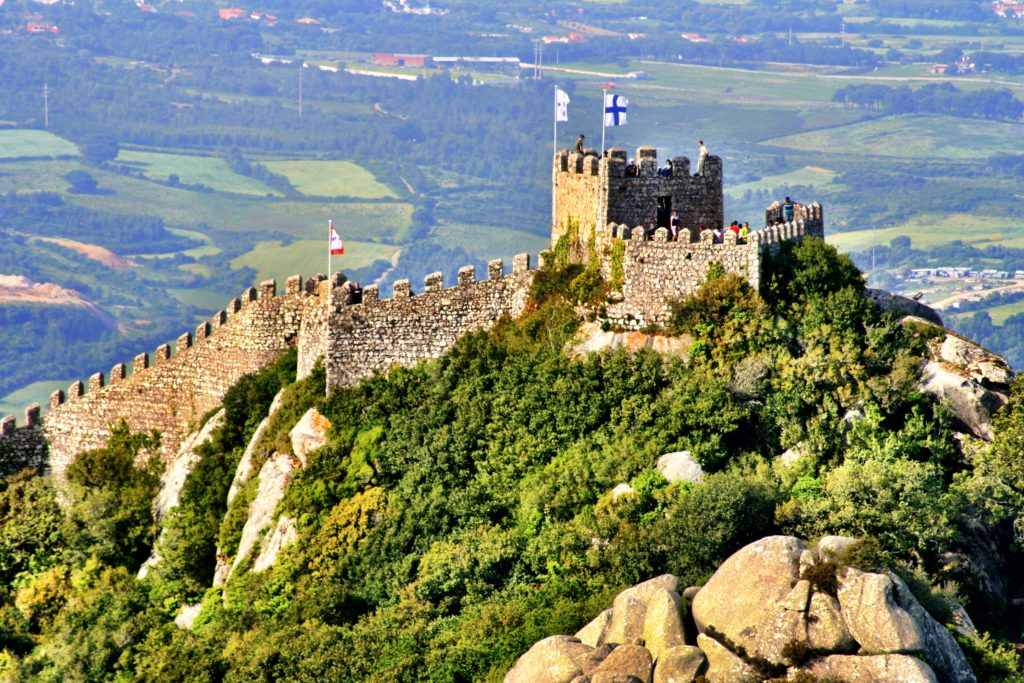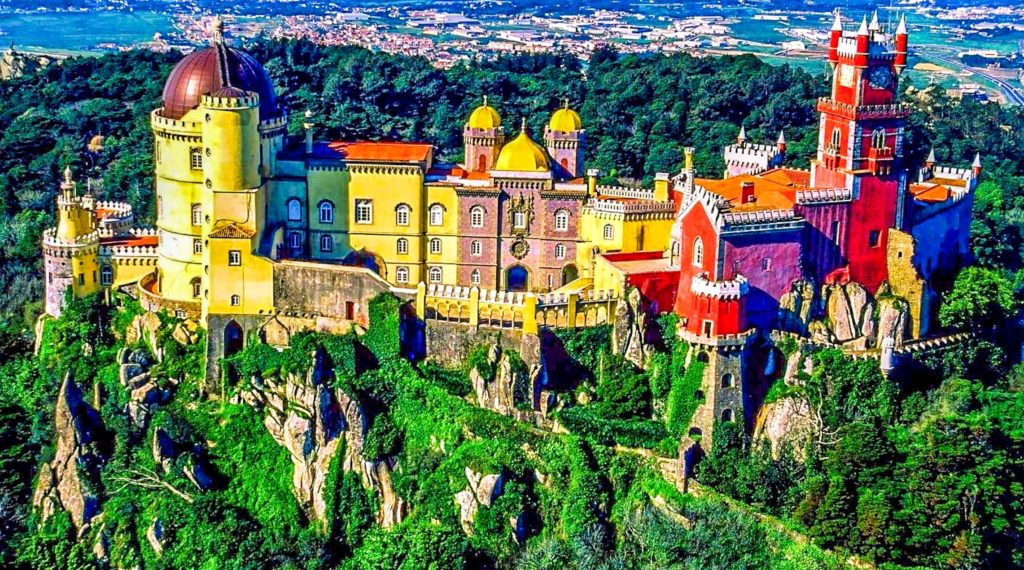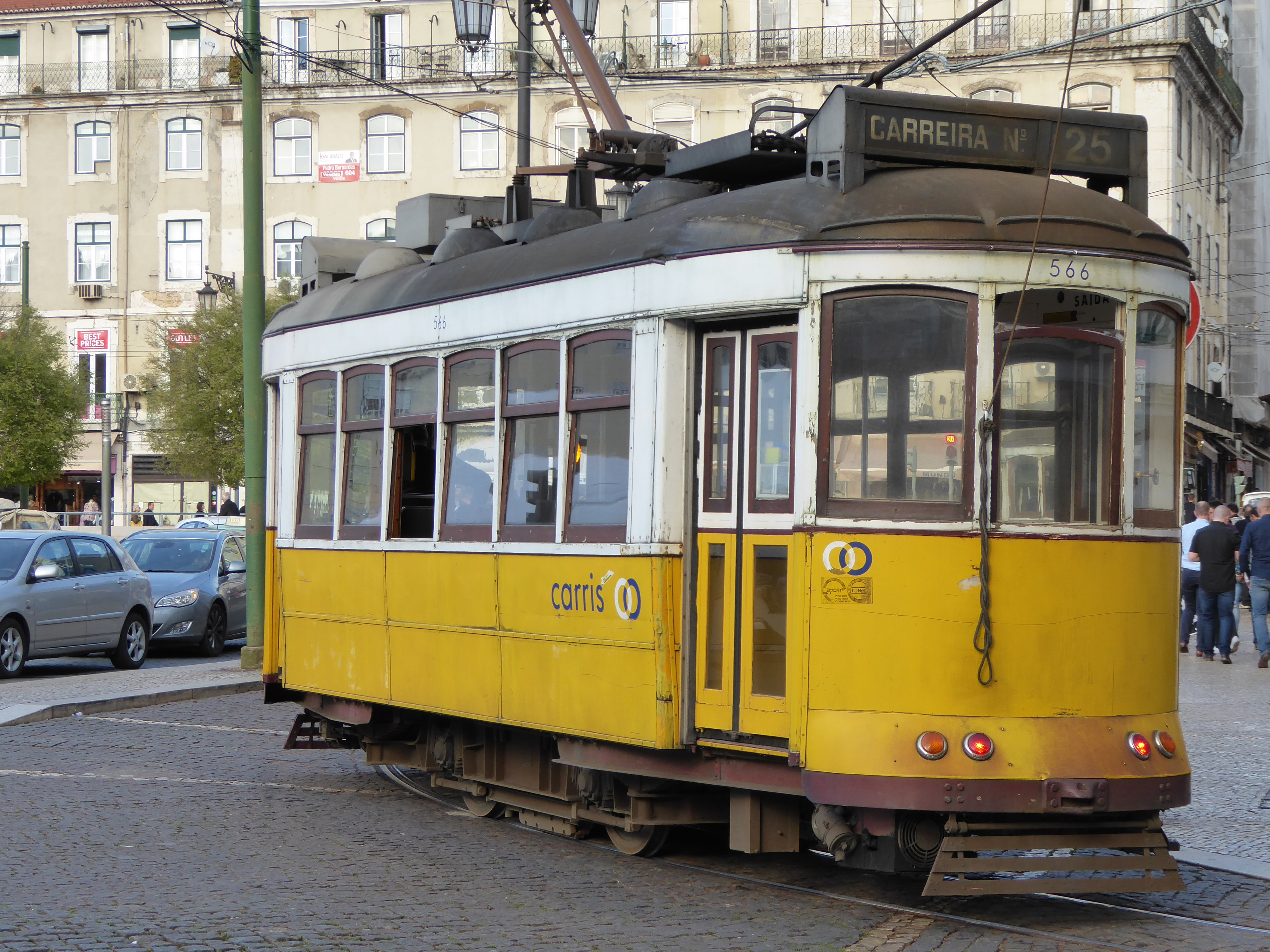When I mentioned to a friend in Australia that we were going to be spending a few days in Lisbon the immediate reaction was “Mate, go to Sintra”. So with a little endorsement and very little research, we clambered into a local train for the hour long ride to this iconic ancient town.
History
Sintra is simply a must, if you are in the area of Lisbon! The old Moorish city, which was recaptured in 1147 by the Portuguese King Alfons 1, has been the summer residence of the Portuguese kings and the aristocracy for more than 600 years. Today Sintra is a popular tourist spot, surely not least because of its mild humid climate and its picturesque location at the foot of the small coastal mountains Sierra de Sintra that rise sharply above the city. The main attraction, however, are its historical sights.

The landmark of Sintra is the National Palace (Palacio Nacional), with its huge, conic, white twin chimneys, which rise above the large palace kitchen, and are visible from quite a distance. It is one of the most important examples of regal architecture in Portugal and for that reason is classified as a National Monument. The palace was continuously inhabited as a royal summer residence from the 14th to the 20th c. It is a conglomerate of different architectural styles. Elaborate wood carved ceilings, which arch over the rooms and marvellous wall decoration with ceramic tiles from the 15th/16th centuries, the Azulejos,, bear witness to the Arabic influence. The tiles were manufactured in Seville and it is the oldest and most extensive collection on the Iberian Peninsula.

High up on the hilltops of the Sierra de Sintra, the well preserved remains of the imposing Moorish Castle (and the Pena Palace) rise above the city. The Moorish castle (Castelo dos Mouros) was built by the Moors in the 8th and 9th centuries and its walls wind themselves like a small Chinese wall round the rock ridges. From the towers and walls one has a spectacular outlook onto the city and its surroundings.

On the highest hilltop the pseudo medieval Pena Palace (Palacio or Castelo da Pena) with a 270 hectare large garden is situated. This marvellous fairy tale castle was begun in 1840 as a royal summer residence on behalf of the German Prince Consort of Queen Maria II, Ferdinand of Saxonia Coburg-Gotha and is the most important example of Portuguese architecture in the Romantic period. It is also called the ‘Portuguese Neuschwanstein’ – in fact – a very fitting comparison!
I was totally impressed! A word to the wise when entering Castelo da Pena and looking for the restaurant, don’t get confused between the restaurant and the cafe. The cafe is on a lower level and offers a more limited range of cuisine. Usually pre-made salads in limited supply.

